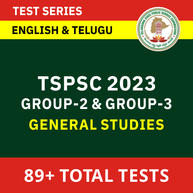TSGENCO కెమిస్ట్ సిలబస్ 2023 మరియు పరీక్షా సరళి
తెలంగాణ స్టేట్ పవర్ జనరేషన్ కార్పొరేషన్ లిమిటెడ్ (TSGENCO) కెమిస్ట్ పోస్టుల కోసం 60 ఖాళీలను TSGENCO కెమిస్ట్ నోటిఫికేషన్ లో విడుదల చేసింది. TSGENCO కెమిస్ట్ వ్రాత పరీక్ష 3 డిసెంబర్ 2023న నిర్వహించబడుతుంది. TSGENCO కెమిస్ట్ పరీక్షకు హాజరు కావాలనుకునే అభ్యర్ధులు TSGENCO కెమిస్ట్ సిలబస్ మరియు పరీక్షా సరళి వివరాలు తెలుసుకోవాలి. TSGENCO కెమిస్ట్ సిలబస్ PDFను ఈ కధనం నుండి డౌన్లోడ్ చేసుకోగలరు. మరిన్ని వివరాలకు ఈ కధనాన్ని తనిఖీ చేయండి.
APPSC/TSPSC Sure shot Selection Group
TSGENCO కెమిస్ట్ సిలబస్ 2023 అవలోకనం
TSGENCO కెమిస్ట్ సిలబస్ 2023 మరియు పరీక్షా సరళి పై అభ్యర్ధులు అవగాహన కలిగి ఉండాలి. TSGENCO కెమిస్ట్ పరీక్షను 03 డిసెంబర్ 2023 న నిర్వహించనున్నారు.
| TSGENCO కెమిస్ట్ సిలబస్ 2023 అవలోకనం | |
| సంస్థ | తెలంగాణ స్టేట్ పవర్ జనరేషన్ కార్పొరేషన్ లిమిటెడ్ (TSGENCO) |
| పోస్ట్ పేరు | కెమిస్ట్ |
| వర్గం | సిలబస్ |
| పోస్ట్ల సంఖ్య | 60 |
| పరీక్ష తేదీ | 03 డిసెంబర్ 2023 |
| ప్రశ్నల సంఖ్య | 100 |
| పరీక్షా వ్యవధి | 2 గంటలు |
| ఉద్యోగ స్థానం | తెలంగాణ |
| వెబ్సైట్ | https://www.tsgenco.co.in/ |
TSGENCO కెమిస్ట్ పరీక్షా సరళి 2023
“వ్రాత పరీక్ష” 100 మార్కులను కలిగి ఉంటుంది, ఇందులో 100 బహుళ ఎంపిక ప్రశ్నలు మరియు ప్రతి ప్రశ్న 1 (ఒక) మార్కును కలిగి ఉంటుంది. సెక్షన్ “ఎ” లో కోర్ సబ్జెక్ట్పై 80 ప్రశ్నలు ఉంటాయి. సెక్షన్ “బి”లో ఇంగ్లిష్, జనరల్ అవేర్నెస్ మరియు ఎనలిటికల్ & న్యూమరికల్ ఎబిలిటీపై 20 ప్రశ్నలు ఉంటాయి, ఇందులో తెలంగాణ చరిత్ర, సంస్కృతి మరియు తెలంగాణ రాష్ట్రం ఏర్పడిన తర్వాత మరియు తెలంగాణ రాష్ట్రం ఏర్పడిన తర్వాత మరియు కంప్యూటర్, దాని ప్రాథమిక పరిజ్ఞానం (MS ఆఫీస్ మొదలైనవి) కూడా ఉన్నాయి. వ్రాత పరీక్ష వ్యవధి 2(రెండు) గంటలు (120 నిమిషాలు).
| సెక్షన్ | ప్రశ్నల సంఖ్య | మార్కులు | వ్యవధి |
| సెక్షన్ – A | 80 | 80 | 2 గంటలు (120 నిమిషాలు) |
| సెక్షన్ – B | 20 | 20 | |
| మొత్తం | 100 | 100 | 2 గంటలు |
TSGENCO కెమిస్ట్ సిలబస్
TSGENCO కెమిస్ట్ సిలబస్ – సెక్షన్ A
INORGANIC CHEMISTRY
- Chemical periodicity: Structure and bonding in homo- and heteronuclear molecules, including shapes of molecules (VSEPR Theory).
- Acids and Bases: Concepts of acids and bases, Hard-Soft acid base concept, non-aqueous solvents.
- Main group elements and their compounds: Allotropy, synthesis, structure and bonding, industrial importance of the compounds.
- Transition elements and co-ordination compounds: Structure, bonding theories, spectral and magnetic properties, reaction mechanisms.
- Inner transition elements: Spectral and magnetic properties, redox chemistry, analytical applications.
- Organometallic Compounds: Synthesis, bonding and structure, reactivity. Organometallics in homogeneous catalysis – Cages and metal clusters.
- Nuclear chemistry: Nuclear reactions, fission and fusion, radio-analytical techniques and activation analysis.
- Inorganic Spectroscopy: Characterisation of inorganic compounds by IR, Raman, NMR, EPR, Mössbauer, UV-Vis, NQR, MS, Electron spectroscopy and microscopic techniques.
ANALYTICAL CHEMISTRY
- Introduction to Analytical Chemistry: Safety in laboratory; Analytical balances – types, care & use, weights and reference mass; Water for lab use – different grades and methods of purification of water; Reagents and Standard solutions – Expression and units of concentrations, Classification of ErrorsSystematic & random errors, identification and reduction of these errors; Significant figures; Qualitative and Quantitative analysis; Statistical functions and reliability of results; Comparison of results – Student’s t-test, F-test & paired-t test.
- Gravimetry: Principles of precipitation gravimetry; Nucleation, precipitation and growth of precipitates; Particle size and filterability of precipitates; Precipitation from homogeneous solution; Co precipitation – impurities in precipitation, Washing, drying, incineration of precipitates; Use of organic reagents in Gravimetric analysis.
- Titrimetric Analysis: Principles underlying titrimetric methods: Primary standards & standard solutions; Equivalence point and endpoint; detection of end point; types of titrations.
- Redox titrations: Principle and detection of equivalance point by visual & potentiometric methods. Applications – Use of Jones reductor; Karl Fischer reagent for water determination.
Complexometric titrations: Principles of Complexometric titrations, stability constants, Use of EDTA for the determination of metals and practical considerations. - Thermal Analysis: Thermal techniques-Introduction, types of thermo analytical methods. Thermogravimetry principle and applications of thermogravimetry, differential thermal analysis- principle and applications of DTA. Differential scanning calorimetry. DSC: Principle, and application of DSC.
- Techniques of Chromatography:
i. Introduction, Classification of chromatographic techniques, differential migration rates, partition ratio, retention time, relation between partition ratio and retention time, capacity factor, selectivity factor. Efficiency of separation – resolution, diffusion, plate theory and rate theory.
ii. GC: Principle, instrumentation, detectors – TCD, FID, ECD. Derivatisation techniques, PTGC.
iii. HPLC: Principle, instrumentation, detectors – UV detectors, Photodiode array detector, fluorescence detector.
iv. Applications: Methods of quantitation for GC and HPLC: GC analysis of hydrocarbons in a mixture.
v. Ion-exchange chromatography: Ion-exchange resins, structure of resins. Ion exchange equilibria, selectivity, ion exchange chromatography with reference to anions and cations, applications separation of rare earth metal ions, Amino acid analysis, purification of water for laboratory and industrial use, deionized water.
PHYSICAL CHEMISTRY
- Quantum Mechanics: Postulates; operator algebra; exactly-solvable systems: particle-in-a-box, harmonic oscillator and the hydrogen atom, including shapes of atomic orbitals; orbital and spin angular momenta; tunneling. Approximate methods of quantum mechanics: Variational principle; perturbation theory up to
second order in energy; applications. - Atomic structure and spectroscopy: Term symbols; many-electron systems and antisymmetry principle. Chemical bonding in diatomics; elementary concepts of MO and VB theories; Huckel theory for conjugated π-electron systems.
- Molecular spectroscopy: Rotational and vibrational spectra of diatomic molecules; electronic spectra; IR and
Raman activities – selection rules; basic principles of magnetic resonance. - Chemical thermodynamics: Laws, state and path functions and their applications; thermodynamic description of various types of processes; Maxwell’s relations; spontaneity and equilibria; temperature and pressure dependence of thermodynamic quantities; Le Chatelier principle; elementary description of phase transitions; phase equilibria and phase rule; thermodynamics of ideal and non-ideal gases, and solutions.
- Statistical thermodynamics: Boltzmann distribution; kinetic theory of gases; partition functions and their relation to thermodynamic quantities – calculations for model systems.
- Electrochemistry: Nernst equation, redox systems, electrochemical cells; Debye-Huckel theory; electrolytic conductance – Kohlrausch’s law and its applications; ionic equilibria; conductometric and potentiometric titrations.
- Chemical kinetics: Empirical rate laws and temperature dependence; complex reactions; steady state approximation; determination of reaction mechanisms; collision and transition state theories of rate constants; unimolecular reactions; enzyme kinetics; salt effects; homogeneous catalysis; photochemical reactions.
- Colloids and surfaces: Stability and properties of colloids; isotherms and surface area; heterogeneous catalysis.
- Solid state: Crystal structures; Bragg’s law and applications; band structure of solids.
- Polymer chemistry: Molar masses; kinetics of polymerization.
ORGANIC CHEMISTRY
- Introduction to Organic Chemistry: IUPAC nomenclature of organic molecules including regio- and stereoisomers.
- Principles of Stereochemistry: Configurational and conformational isomerism in acyclic and cyclic compounds; stereogenicity, stereoselectivity, enantioselectivity, diastereoselectivity and asymmetric induction.
- Aromaticity: Benzenoid and non-benzenoid compounds – generation and reactions.
- Organic reactive intermediates: Generation, stability and reactivity of carbocations, carbanions, free radicals, carbenes, benzynes and nitrenes.
- Organic reaction mechanisms: Involving addition, elimination and substitution reactions with electrophilic, nucleophilic or radical species. Determination of reaction pathways. Common named reactions and rearrangements – applications in organic synthesis. Organic transformations and reagents: Functional group interconversion including oxidations and reductions; common catalysts and reagents (organic, inorganic, organometallic and enzymatic). Chemo, regio and stereoselective transformations.
- Concepts in organic synthesis: Retrosynthesis, disconnection, synthons, linear and convergent synthesis,
umpolung of reactivity and protecting groups. Asymmetric synthesis: Chiral auxiliaries, methods of asymmetric induction – substrate, reagent and catalyst-controlled reactions; determination of enantiomeric and diastereomeric excess; enantio-discrimination. Resolution – optical and kinetic.
Structure determination of organic compounds by IR, UV-Vis, 1H & 13C NMR and Mass spectroscopic
techniques. - Pericyclic reactions: Electrocyclization, cycloaddition, sigmatropic rearrangements and other related concerted reactions. Principles and applications of photochemical reactions in organic chemistry.
- Chemistry of natural products: Carbohydrates, proteins and peptides, fatty acids, nucleic acids, terpenes, steroids and alkaloids. Biogenesis of terpenoids and alkaloids.
ENVIRONMENTAL AND GENERAL CHEMISTRY
- Environmental Chemistry
- Air Pollution and Control
- Water Pollution and Control
- Noise Pollution and Control
- Hazardous waste Management
- Water Technology
- Corrosion and its control
- Fuel Technology
- Power Plant Engineering
- Heat-Transfer
TSGENCO కెమిస్ట్ సిలబస్ – సెక్షన్ B
General Awareness and Numerical Ability:
- i) Analytical & Numerical Ability
- ii) General Awareness
- iii) English
- iv) Telangana Culture, Movement. Post formation development of Telangana State.
- v) Basic knowledge of Computer for handling office works such as MS Office etc.
TSGENCO కెమిస్ట్ సిలబస్ PDF
TSGENCO కెమిస్ట్ వ్రాత పరీక్ష 3 డిసెంబర్ 2023న నిర్వహించబడుతుంది. TSGENCO కెమిస్ట్ పరీక్షకు హాజరు కావాలనుకునే అభ్యర్ధులు TSGENCO కెమిస్ట్ సిలబస్ మరియు పరీక్షా సరళి పై అవగాహన కలిగి ఉండాలి. వివరణాత్మక TSGENCO కెమిస్ట్ సిలబస్ PDF ఇక్కడ అందించాము. TSGENCO కెమిస్ట్ సిలబస్ PDF ను డౌన్లోడ్ చేయడానికి దిగువ ఇచ్చిన లింక్ పై క్లిక్ చేయండి.
TSGENCO ఆర్టికల్స్
| TSGENCO నోటిఫికేషన్ 2023 |
| TSGENCO కెమిస్ట్ దరఖాస్తు ఆన్లైన్ లింక్ |
| TSGENCO AE అర్హత ప్రమాణాలు 2023 |
| TSGENCO AE 2023 సిలబస్ |
| TSGENCO AE దరఖాస్తు ఆన్లైన్ లింక్ |
| మరింత చదవండి | |
| తాజా ఉద్యోగ ప్రకటనలు | ఇక్కడ క్లిక్ చేయండి |
| ఉచిత స్టడీ మెటీరియల్ (APPSC, TSPSC) | ఇక్కడ క్లిక్ చేయండి |
| ఉచిత మాక్ టెస్టులు | ఇక్కడ క్లిక్ చేయండి |
| Adda247 తెలుగు APP | ఇక్కడ క్లిక్ చేయండి |





